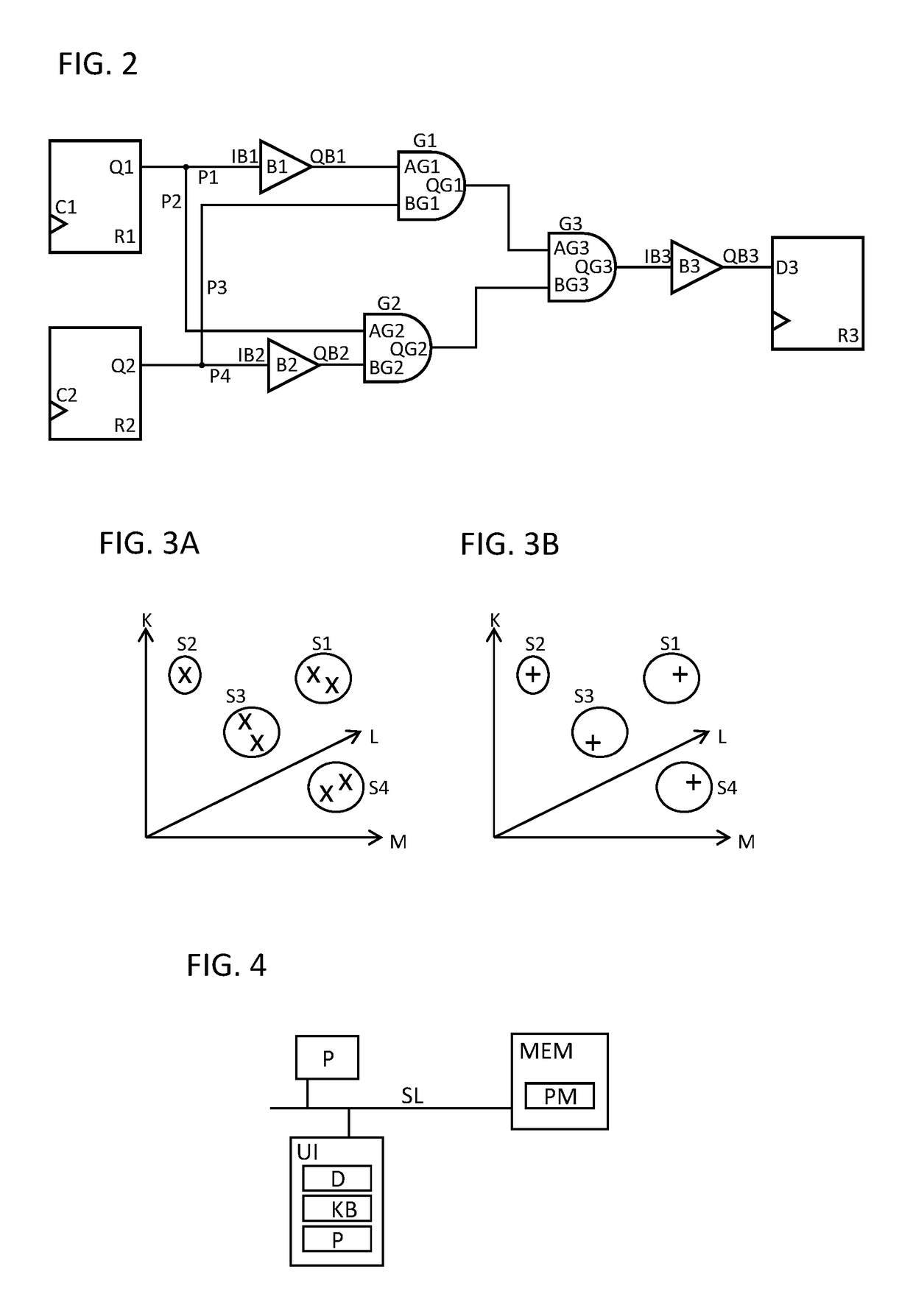Static timing analysis with improved accuracy and efficiency
a timing analysis and accuracy technology, applied in the field of static timing analysis, can solve the problems of overestimation of delays, unstable circuit behavior, pessimism, etc., and achieve the effects of reducing runtime, improving accuracy, and reducing pessimism
- Summary
- Abstract
- Description
- Claims
- Application Information
AI Technical Summary
Benefits of technology
Problems solved by technology
Method used
Image
Examples
Embodiment Construction
[0065]FIG. 1 shows a simplified representation of an illustrative design flow for designing an electronic circuit in particular an integrated circuit (IC). An implementation of a method according to the improved concept may for example be embedded within such design flow. However, an implementation of a method according to the improved concept may also be utilized within another design flow or independently from a design flow.
[0066]At a high level, the process starts with the product idea (step 100) and is realized in an electronic design automation (EDA) software design process (step 110). When the design is finalized, it can be taped-out (step 127). At some point after tape-out, the fabrication process (step 150) and packaging and assembly processes (step 160) occur, resulting ultimately in finished IC chips (result 170).
[0067]The EDA software design process (step 110) itself is composed of a number of steps 112-130, shown in linear fashion for simplicity. In an actual integrated ...
PUM
 Login to View More
Login to View More Abstract
Description
Claims
Application Information
 Login to View More
Login to View More - R&D
- Intellectual Property
- Life Sciences
- Materials
- Tech Scout
- Unparalleled Data Quality
- Higher Quality Content
- 60% Fewer Hallucinations
Browse by: Latest US Patents, China's latest patents, Technical Efficacy Thesaurus, Application Domain, Technology Topic, Popular Technical Reports.
© 2025 PatSnap. All rights reserved.Legal|Privacy policy|Modern Slavery Act Transparency Statement|Sitemap|About US| Contact US: help@patsnap.com



